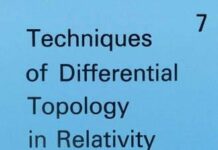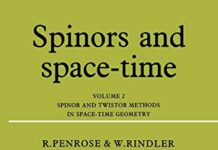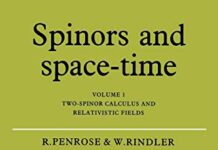
Ebook Info
- Published: 2012
- Number of pages: 304 pages
- Format: PDF
- File Size: 8.68 MB
- Authors: Roger Penrose
Description
From Nobel prize-winner Roger Penrose, this groundbreaking book is for anyone “who is interested in the world, how it works, and how it got here” (New York Journal of Books). Penrose presents a new perspective on three of cosmology’s essential questions: What came before the Big Bang? What is the source of order in our universe? And what cosmic future awaits us? He shows how the expected fate of our ever-accelerating and expanding universe—heat death or ultimate entropy—can actually be reinterpreted as the conditions that will begin a new “Big Bang.” He details the basic principles beneath our universe, explaining various standard and non-standard cosmological models, the fundamental role of the cosmic microwave background, the paramount significance of black holes, and other basic building blocks of contemporary physics. Intellectually thrilling and widely accessible, Cycles of Time is a welcome new contribution to our understanding of the universe from one of our greatest mathematicians and thinkers.
User’s Reviews
Editorial Reviews: Review “A surprising and unorthodox work. . . . Deeply enlightening.” —The Wall Street Journal“The hyper-density of this book made my brain feel simultaneously wiped out and dazzled.” —Anthony Doerr, Best Science Books of the Year, The Boston Globe “An intellectual thrill ride. . . . There’s no science fiction here, no imaginative filling in the gaps. There is, however, a very strong scientific case for expanding the boundaries of our thinking.” —Washington Independent Book Review “Science needs more people like Penrose, willing and able to point out the flaws in fashionable models from a position of authority and to signpost alternative roads to follow.” —The Independent “If you’ll forgive a skiing metaphor, Cycles of Time is a black diamond of a book. But like all steep slopes, sometimes you take a moment from your struggles and look up, and in front of you is an utterly gorgeous view.” —The Boston Globe “Truly extraordinary. . . . This fascinating book will surely become a classic in the history of cosmology.” —Choice “Of interest to anyone who is interested in the world, how it works, and how it got here. . . . The best thing to do is to take a deep breath, grab a copy of this fascinating book, and plunge right in.” —New York Journal of Books “We must understand why the universe began in an incredibly special state, so well ordered that 14 billion years later, the universe still has not reached maximum disorder. Penrose is at his best when he explains this deep and beautiful mystery, and the book may be worth reading for this chapter alone.” —Science “A genuinely new idea about the origins of the universe . . . [which] must be taken seriously.” —The Scotsman “As uncondescending in style . . . as his previous books. . . . [There are] many pleasures to be had.” —The Sunday Times (London) About the Author Roger Penrose is Emeritus Rouse Ball Professor of Mathematics at Oxford University. He has received a number of prizes and awards, including the 2020 Nobel Prize in Physics for his work on black hole formation, as well as the 1988 Wolf Prize for physics, which he shared with Stephen Hawking for their joint contribution to our understanding of the universe. His books include Cycles of Time, The Road to Reality, The Nature of Space and Time, which he wrote with Hawking, and The Emperor’s New Mind. He has lectured extensively at universities throughout America. He lives in Oxford. Excerpt. © Reprinted by permission. All rights reserved. PREFACEOne of the deepest mysteries of our universe is the puzzle of whence it came. When I entered Cambridge University as a mathematics graduate student, in the early 1950s, a fascinating cosmological theory was in the ascendant, known as the steady-state model. According to this scheme, the universe had no beginning, and it remained more-or-less the same, overall, for all time. The steady-state universe was able to achieve this, despite its expansion, because the continual depletion of material arising from the universe’s expansion is taken to be compensated by the continual creation of new material, in the form of an extremely diffuse hydrogen gas. My friend and mentor at Cambridge, the cosmologist Dennis Sciama, from whom I learnt the thrill of so much new physics, was at that time a strong proponent of steady-state cosmology, and he impressed upon me the beauty and power of that remarkable scheme of things. Yet this theory has not stood the test of time. About 10 years after I had first entered Cambridge, and had become well acquainted with the theory, Arno Penzias and Robert Wilson discovered, to their own surprise, an all-pervading electromagnetic radiation, coming in from all directions, now referred to as the cosmic microwave background or CMB. This was soon identified, by Robert Dicke, as a predicted implication of the ‘flash’ of a Big-Bang origin to the universe, now presumed to have taken place some 14 thousand million years ago—an event that had been first seriously envisaged by Monsignor Georges Lemaître in 1927, as an implication of his work on Einstein’s 1915 equations of general relativity and early observational indications of an expansion of the universe. With great courage and scientific honesty (when the CMB data became better established), Dennis Sciama publicly repudiated his earlier views and strongly supported the idea of the Big Bang origin to the universe from then on. Since that time, cosmology has matured from a speculative pursuit into an exact science, and intense analysis of the CMB—coming from highly detailed data, generated by numerous superb experiments—has formed a major part of this revolution. However, many mysteries remain, and much speculation continues to be part of this endeavour. In this book, I provide descriptions not only of the main models of classical relativistic cosmology but also of various developments and puzzling issues that have arisen since then. Most particularly, there is a profound oddness underlying the Second Law of thermodynamics and the very nature of the Big Bang. In relation to this, I am putting forward a body of speculation of my own, which brings together many strands of different aspects of the universe we know. My own unorthodox approach dates from the summer of 2005, though much of the detail is more recent. This account goes seriously into some of the geometry, but I have refrained from including, in the main body of the text, anything serious in the way of equations or other technicalities, all these being banished to the Appendices. The experts, only, are referred to those parts of the book. The scheme that I am now arguing for here is indeed unorthodox, yet it is based on geometrical and physical ideas which are very soundly based. Although something entirely different, this proposal turns out to have strong echoes of the old steady-state model! I wonder what Dennis Sciama would have made of it. Read more
Reviews from Amazon users which were colected at the time this book was published on the website:
⭐Roger Penrose’s latest book is an exposition of his latest cosmological speculations. As usual Penrose cheerfully overestimates the mathematical capabilities and accomplishments of the typical scientifically educated lay person his books are ostensibly aimed at. He presents what he sees as a baffling fact, the unusually low entropy state of the early universe, and gradually leads the reader up to his explanation of the nature of our universe. Though Penrose is coy throughout the book’s first two sections about the details of his conjecture, the title gives it away and indeed this book is ultimately a speculation about cyclical universes. There are definitely some points of interest, and readers who enjoyed Penrose’s earlier works such as
⭐will likely be intrigued by parts of the book. But while less overambitious than the author’s sweeping
⭐, Cycles of Time is far denser than more accessible popular science works such as Stephen Hawking’s
⭐, so those who found that bestseller to be of use mostly as bookcase filler might want to give Penrose a pass here.The book is divided into three main sections: entropy and the Second Law of Thermodynamics; the Big Bang and the puzzling low-entropy state of the early universe; then the largest and most detailed concluding section. This section details Penrose’s Conformal Cyclic Cosmology (CCC) model, a scheme whereby a tiny portion of a late-stage universe in its Big Rip phase becomes the seed of the next universe’s Big Bang, and so on ad infinitum.Also as the book progresses, the author goes through at least three voices: first the definite, lecturing one in which entropy and Big bang cosmology are presented. Then the speculative, theorizing one in which CCC is detailed. Finally he concludes on a tentative note with overtones of self-doubt. Here Penrose frankly muses aloud. He makes vague moves toward linking (A) the explosive late-stage expansion of the universe as the expansive cosmological constant lambda overwhelms the dwindling effects of gravity and (B) the similarly explosive growth of the very early-stage universe in its hypothetical inflationary phase. But up until that point, Penrose has expressed nothing but skepticism regarding inflation, and in fact one of the self-described strengths of his CCC proposal is that it obviates the need for inflation altogether!Penrose raises up CCC as the latest rival to the plain linear time Big Bang. He admits to a youthful fondness for the old Continuous Creation (CC) model, and CCC is admittedly negatively motivated by an authorial distaste for the unadorned Big Bang. On the positive motivation side, Penrose has been so captivated by a mathematical model developed by his colleague Paul Tod that he has developed it into his CCC idea. There seems to be no direct evidence for CCC, it offers no possibility for experiment, and it is probably non-falsifiable. In other words, on its merits it has a great deal in common with string theory, which Penrose has always been openly skeptical of. I refer to his seduction by math because reading Penrose enthuse over Tod’s conformal map and its implication of a pre-Big Bang universe is a little like reading about Edward Witten championing string theory on the grounds of its mathematical beauty.The author is of course not the first to speculate about earlier and later Big Bangs, cyclical Big Bangs, infinite Big Bangs, Big Bounces, etc. He acknowledges as much and even devotes a brief chapter to previous pre-Big Bang theories. Oddly though, he is quite unsympathetic to rival ideas that on the surface have a great deal in common with his CCC; I am referring specifically to Andre Linde’s infinite inflation model. Penrose is skeptical of inflation and the need for it and is no champion of string theory or any string-based ideas. But strings aside, anyone familiar with infinite inflation will be right at home with CCC.So although I am left completely unconvinced by book’s end about the usefulness of or the need for CCC, the foregoing thoughts should serve to demonstrate that the book has succeeded at least in getting one reader to consider Penrose’s arguments and to ponder the issues he raises. If Cycles of Time can do as much for some key young physics and math students, then the author may be content.I should mention that although the appendices are mostly repositories of even more advanced math than Penrose believed most of his readers would be comfortable with, the endnotes are of significant use while reading the text. Chore though it may be, it is a more rewarding read to keep one finger open to the notes while reading the text and flip between the two as needed. The notes explain and clarify points Penrose makes throughout the text; they are mostly not simply page references to cited works. I wish (American) publishers would realize that in many cases such as this one footnotes serve the purpose far better than endnotes; they are not just irrelevant distractions cluttering up the page margin. But this seems to be a losing battle, and Penrose’s publisher, Knopf, has joined the majority in considering notes to be best tucked tidily into the back of the book, 200 pages away from the text they apply to.
⭐Sir Roger Penrose, Emeritus Rouse Ball Professor of Mathematics in the University of Oxford, has written another marvellous book. Once again, he manages to discuss topics in modern physics in a way that will educate and enthuse the intelligent layman while retaining enough substance to engage the more sophisticated reader. This time, the topic is (in Penrose’s words) “an extraordinary new view of the universe,” a theory that he calls “Conformal Cyclic Cosmology (CCC).”As in his previous efforts, Penrose’s success derives from his ability to actually teach some fundamental concepts before entering the more speculative domains. Hence, the first third of the book is devoted to an informative explanation of entropy and the second law of thermodynamics, and their place in describing the evolution of the universe. In the second third, Penrose emphasises the unique character of the low entropy state of the early universe before gravitational degrees of freedom had been activated. In this part, he also introduces the notion of “strict conformal diagrams” that provide a graphical description of the rather involved maths.The final portion of the book is devoted to an intriguing summary of CCC. This is based largely on Penrose’s earlier introduction of the Weyl Curvature Hypothesis that requires the Weyl curvature tensor to vanish at the conformal hypersurface of the Big Bang. CCC proposes that beyond the distant future of the current universe lies another Big Bang and, conversely, before the Big Bang of the current universe lies the future infinity of a previous one, with space-time being merged at the boundary of each “aeon” by a conformal rescaling of the metric tensor. How this is reconciled with the continuing increase in entropy, consistent with the second law, is quite interesting and I won’t spoil the surprise by revealing it here. The book concludes with a mathematical appendix that more fully describes some of the basic notions. This, in conjunction with the notes and cited references, will help the student on his way.To be sure, this book will challenge even the brightest and most motivated layman. Understanding just the elementary exposition of the basic ideas requires some serious thinking. And Penrose cannot help dropping terms like “tensor field” and “tangent space” that will baffle the novice. There are even a few equations. In addition to thinking, one should be prepared to consult additional references and ask many questions. But, after all, that is what learning is all about.Enthusiastically recommended!
⭐As a mere physics graduate I can jgrasp the concept of conformal mapping. It seems an ingenious way of sidestepping the Big Bang singularity by redefining time and space with a geometrical sleight of hand, and if done carefully real spacetime becomes singularity and vice versa. and the transition from Before to After the BB is smooth. To avoid thinking about the Start I naively do a related trick by using logarithmic time so there never is one! But it is clear that there are many aspects of cosmology like entropy that have to be dealt with carefully, and that’s where I get lost despite several re-readings.The writing is apparently in clear good English but for example the explanation of conformal diagrams could have been done better.And oh! the notation. It is convenient especially for a professional mathematician to use symbols to represent things, but Penrose runs through the whole typographer’s collection. Roman, Greek, (possibly even Thai) Lower case, upper case, italic, bold, open, even bold sans serif, and one font that is so excessively curly that I can’t make out what letter it is. I wish he had put in a little table to remind the reader if the letter represents a point, a tensor, a concept, a space or a process.
⭐the book is not particularly well written if it was intended to be read by a general audience.it sometimes feels a bit like a transcript from one of his lectures. but if you already have some understanding of physics or prepared to put in some time and effort to understand his ideas, then this might be just what they’re looking for. Otherwise you might be better off looking elsewhere for a more “friendly” introductory text on physics.
⭐Difficult to read but worth struggling with in mall repeated chunks. Only really understandable by someone at ease with Einstein’s second (General) theory of relativity. Appendices with the maths, but with my understanding of physics limited to a first degree, I cannot undertand the equations at all. So, for me, only a limited journalistic level of understanding possible.
⭐I read Hawking’s “The Grand Design” about two weeks before picking this up. I’d been quite disappointed with that one, as I felt it to be so dumbed down that the arguments lost cohesion and descended into a rather confused and impregnable morass. What a refreshing contrast Roger Penrose’s book has been! The explanations are clear with good examples and Roger builds his arguments logically and coherently. I never knew the second law of thermodynamics was so interesting! It’s not for the faint-hearted though – the mathematics in this book are essential to make sense of it, and I suspect they will be hard going for anyone without exposure beyond A-level. I think this point will be devisive. But personally, I enjoyed the maths and it was nice to finally understand why Hawking was conjecturing about why we don’t remember the future in “A Brief History of Time”!
⭐I’m not going to lie and say this book is easy, because it really isn’t. While it’s entertaining in the most part and even funny in places, in other places, it’s very dense, and while Penrose tries to keep the book as close to layman’s terms as he can, there are parts which require a pretty good grasp of advanced mathematics. The ideas put forward in the book are extremely interesting, and it’s a very rewarding book once you get your head around the detachment caused by having to think about real-world events in terms of their mathematical analogues. There were times when I had to go over passages more than once, but it’s worth sticking with it. An excellent read and a very big idea indeed.
Keywords
Free Download Cycles of Time: An Extraordinary New View of the Universe in PDF format
Cycles of Time: An Extraordinary New View of the Universe PDF Free Download
Download Cycles of Time: An Extraordinary New View of the Universe 2012 PDF Free
Cycles of Time: An Extraordinary New View of the Universe 2012 PDF Free Download
Download Cycles of Time: An Extraordinary New View of the Universe PDF
Free Download Ebook Cycles of Time: An Extraordinary New View of the Universe




